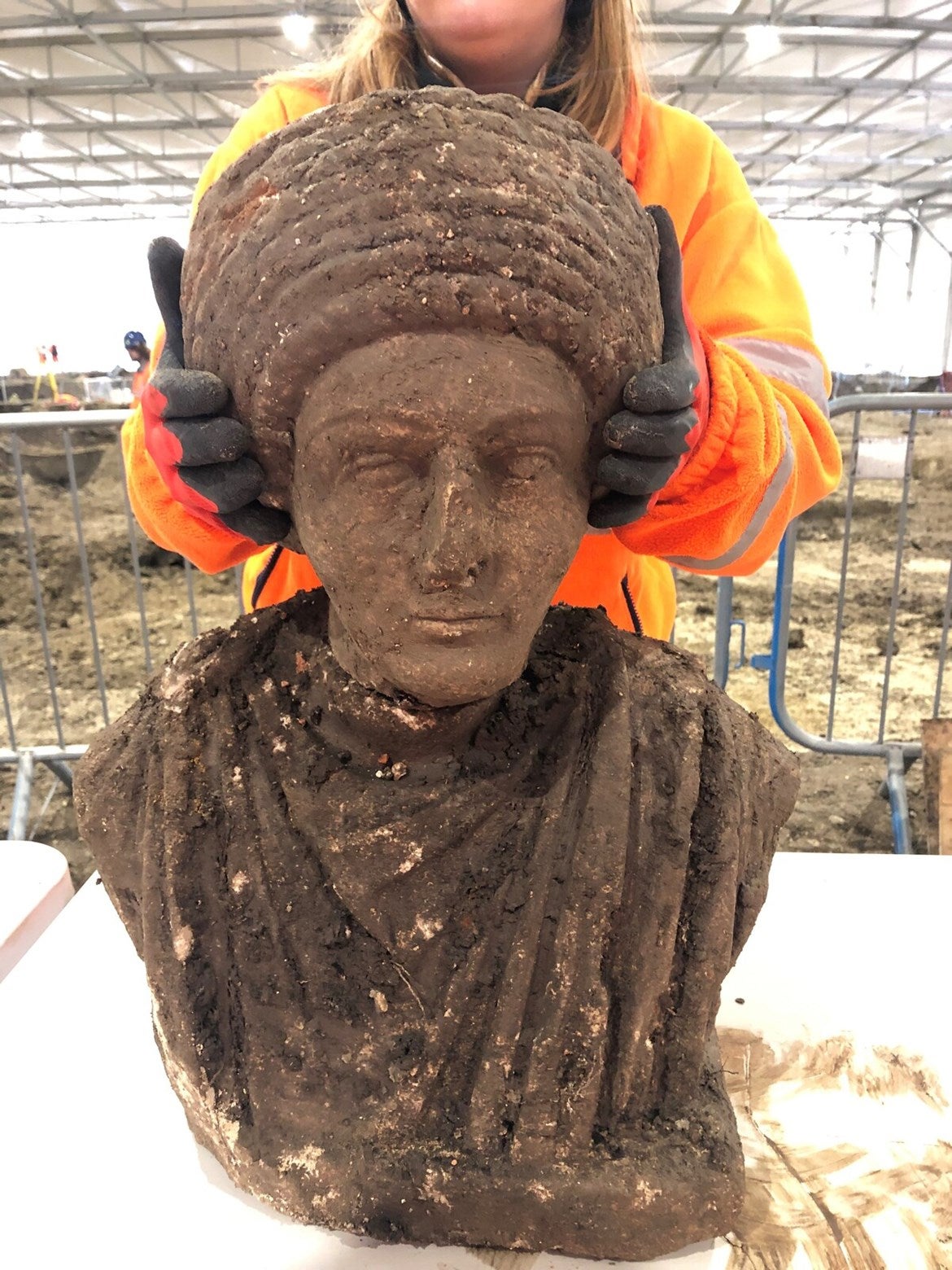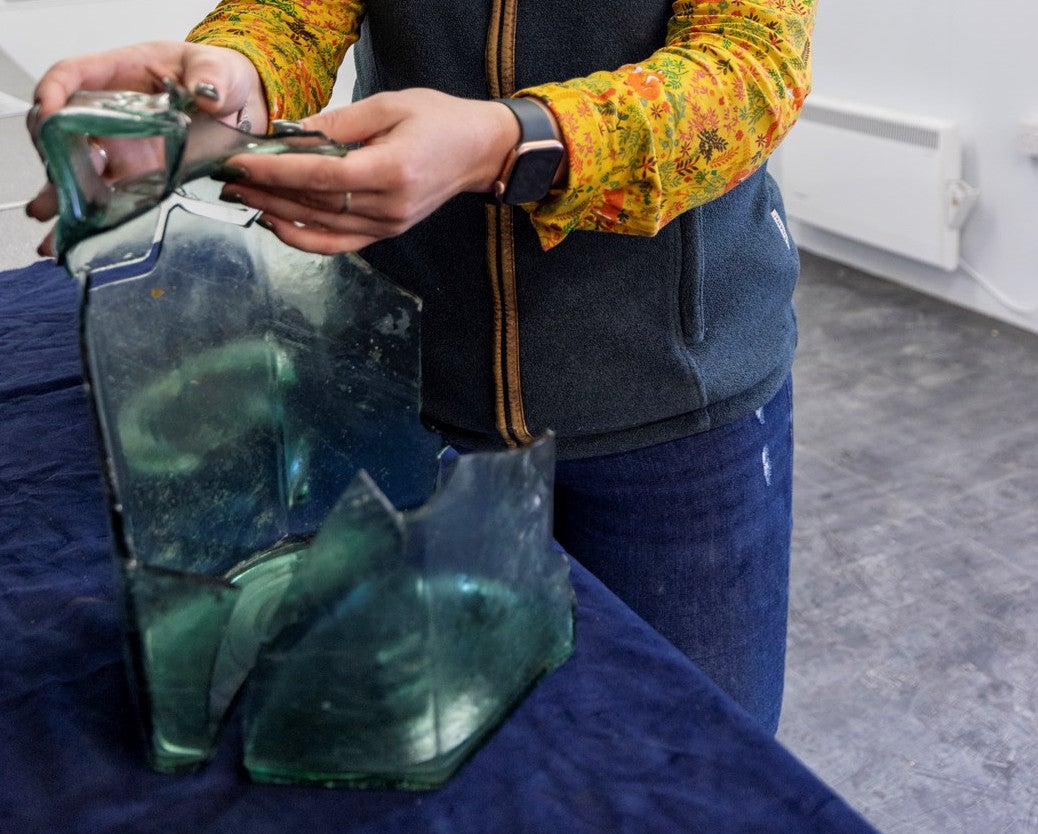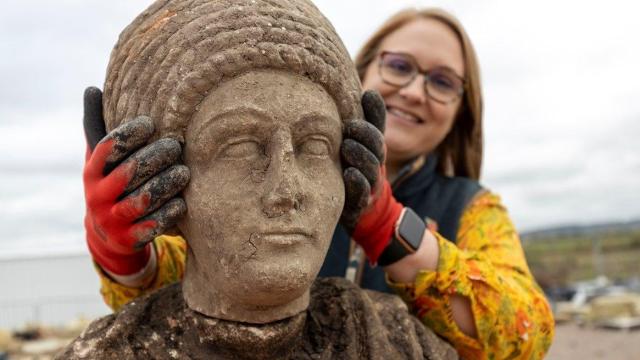Archaeologists conducting excavations prior to the construction of England’s high-speed rail system have uncovered three Roman busts and other rare artifacts at the site of a former church.
The Roman artifacts were found beneath a Norman-era church in Stoke Mandeville, a village located 74 km northwest of London, England. The seven-month-long excavations at the site were wrapping up when the statues made their surprise appearance.
“For us to end the dig with these utterly astounding finds is beyond exciting,” Rachel Wood, lead archaeologist with enabling works contractor Fusion JV, explained in an HS2 press release. “The statues are exceptionally well preserved, and you really get an impression of the people they depict — literally looking into the faces of the past is a unique experience.”
Fusian JV, along with commercial archaeological service L-P Archaeology, uncovered the three stone busts in a circular ditch located near the foundations of a former Anglo-Saxon tower. A Norman church known as St. Mary’s stood here until the mid-19th century and dates back to around 1080 CE, the BBC reports. The archaeological work is being done in preparation for HS2, a high-speed railway network that will eventually connect London, the Midlands, the North, and Scotland.
Two stone torsos uncovered at the site were found to match two of the busts, one depicting a male and the other a female. No torso was found to match the third head, an apparent depiction of a child. Vandals may have knocked the heads off the torsos, which is not uncommon.

The team also found fragments of a hexagon-shaped Roman glass jug. This sort of thing is very rare, with the only other example being a completely intact vessel (found in Tunisia) that’s currently on display at the Metropolitan Museum of Art in New York City, according to Wood. Roman cremation urns, painted wall plaster, and roof tiles were some of the other items found at the site.
“[It] leads us to wonder what else might be buried beneath England’s medieval village churches,” said Wood. “This has truly been a once in a lifetime site and we are all looking forward to hearing what more the specialists can tell us about these incredible statues and the history of the site before the construction of the Norman church.”

Indeed, the history of the site is already coming into greater focus. The oldest layers at the Stoke Mandeville site point to a Bronze Age burial mound. A square-shaped structure was then built atop the site during the Roman period, with the new finds suggesting it was a Roman mausoleum. This building was destroyed during the Norman period, and St. Mary’s church was built in its place; the walls and demolition rubble of the Roman buildings were found directly beneath the Norman foundations.
From here, the statues will be cleaned and examined at the lab. The researchers are hoping to find evidence of pigments on the stone busts and torsos, which would indicate the colour of paints used to decorate them. The final destination of the artifacts is yet to be determined, but a public display at a local museum seems most appropriate.
